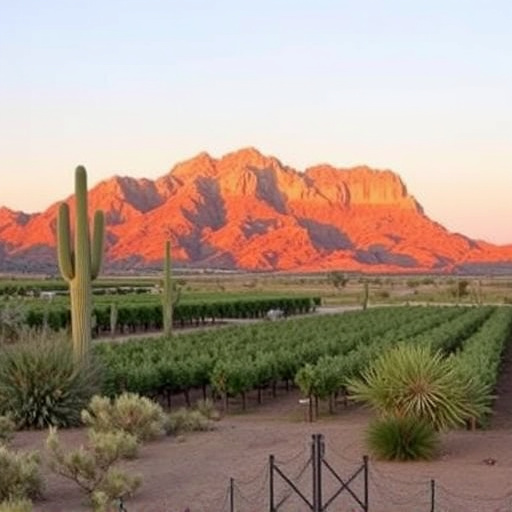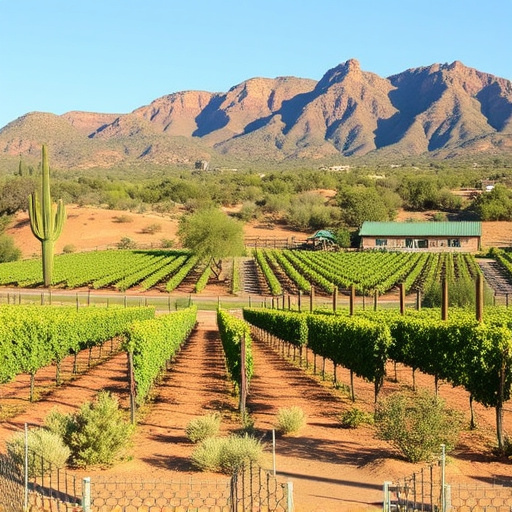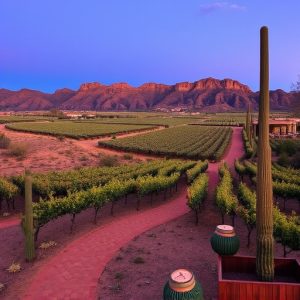Southern Arizona's microclimates, from cool mountain slopes to arid deserts, significantly shape the unique wine characteristics of local terroirs. These localized climates impact grape growth and flavor development, enabling southern Arizona wineries to produce a diverse range of wines with distinct flavors. Grape varieties like Tempranillo and Grenache thrive in cooler areas, while Zinfandel and Syrah excel in warmer regions, showcasing the region's rich wine diversity for enthusiasts to explore.
Explore the enchanting world of microclimate-driven wines in Southern Arizona, where diverse terroirs create unique flavors that captivate palates. This article delves into the intricate relationship between local microclimates and grape cultivation, revealing how they shape the distinct wine styles of the region. From bustling vineyards nestled in valleys to elevated estates, we uncover the secrets behind southern Arizona’s thriving wineries, providing insights for consumers eager to savor these terroir-inspired vintages.
- Understanding Microclimates and Their Impact on Wine Production in Southern Arizona
- – Definition of microclimates and their unique characteristics
Understanding Microclimates and Their Impact on Wine Production in Southern Arizona

In southern Arizona, understanding microclimates is key to unlocking the unique characteristics of wine produced across various terroirs. These localized climates, often distinct from the broader regional climate, significantly influence grape growing and vinification. Factors such as temperature variations, sunlight exposure, wind patterns, and humidity levels create conditions that can dramatically affect grape ripening, sugar accumulation, acid retention, and other key factors in winemaking.
The diverse landscapes of southern Arizona, ranging from high-altitude mountains to desert valleys, contribute to these microclimates. Consequently, wineries in this region produce a wide array of wines showcasing distinct flavors and styles. For instance, cooler microclimates favor grapes like Tempranillo and Grenache, while warmer areas excel in growing varieties such as Zinfandel and Syrah. This diversity not only enriches the local wine scene but also offers enthusiasts an exciting exploration of how terroir shapes the final product in southern Arizona wineries.
– Definition of microclimates and their unique characteristics

Microclimates, distinct local climates that can vary significantly within a larger region, play a pivotal role in shaping the characteristics of wine produced by southern Arizona wineries. Each microclimate offers unique temperature, humidity, and sunlight patterns, influencing grape growth, ripening, and flavor development. These variations contribute to the diversity and distinctiveness of wines from different areas across southern Arizona’s terroirs (unique geographic regions).
In southern Arizona, microclimates range from cool mountain slopes to arid desert floors. Mountainous regions experience cooler temperatures, which can slow grape ripening and result in wines with higher acidity and crisp flavors. Conversely, lower-elevation areas bask in warmer weather, encouraging faster ripening and potentially leading to richer, fuller-bodied wines. These contrasting microclimates provide southern Arizona wineries with a wide array of options for cultivating diverse grape varieties and crafting unique, terroir-driven wine styles.
Southern Arizona’s diverse terroirs, shaped by distinct microclimates, offer winemakers a unique canvas to create varietal expressions that reflect the region’s multifaceted character. By understanding and harnessing these microclimatic influences, southern Arizona wineries can produce wines that showcase both regional identity and global appeal, making them destinations of note for wine enthusiasts exploring the vast diversity within our state.
